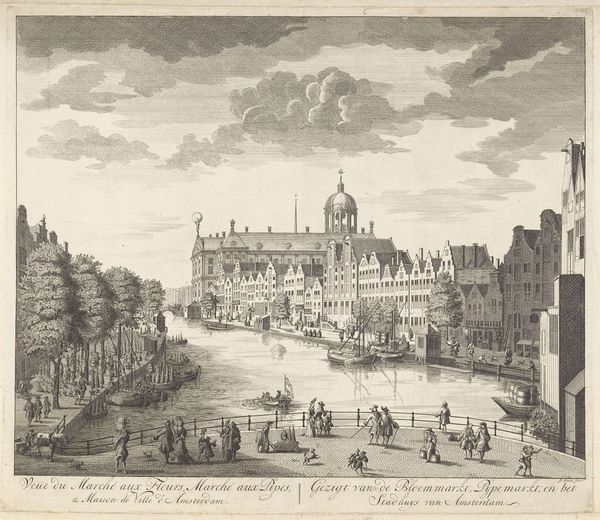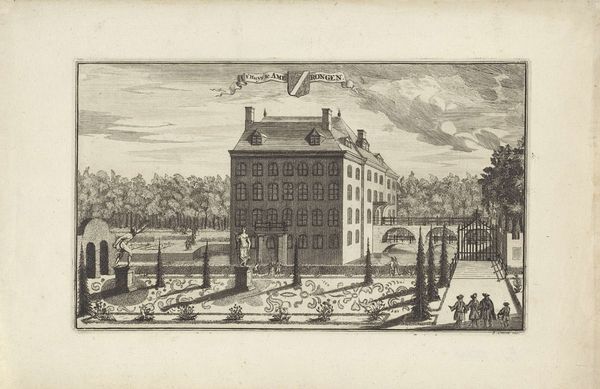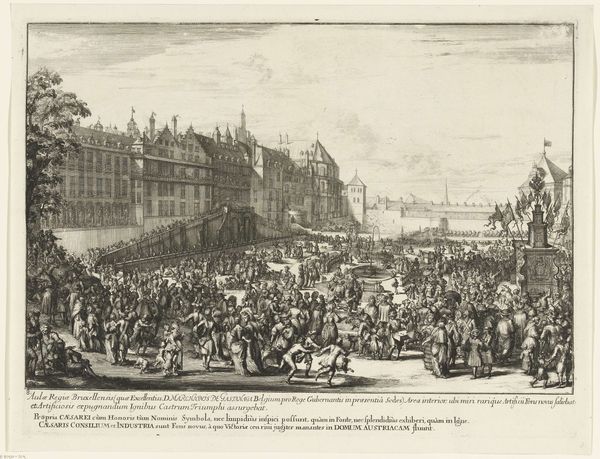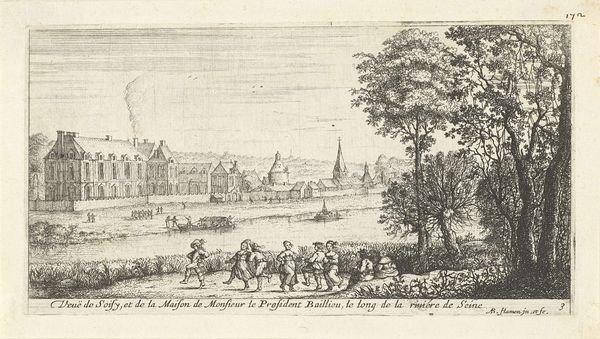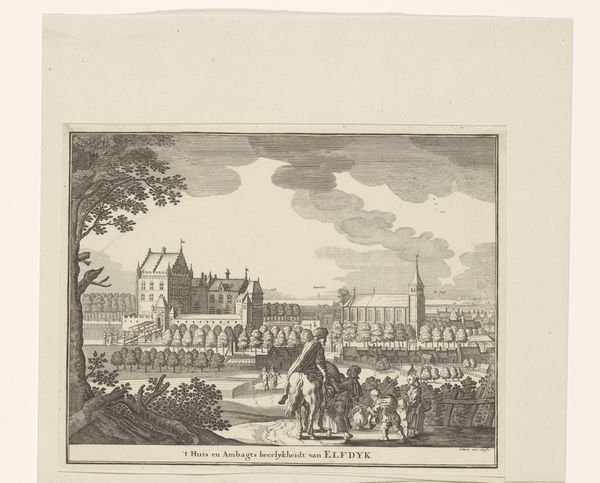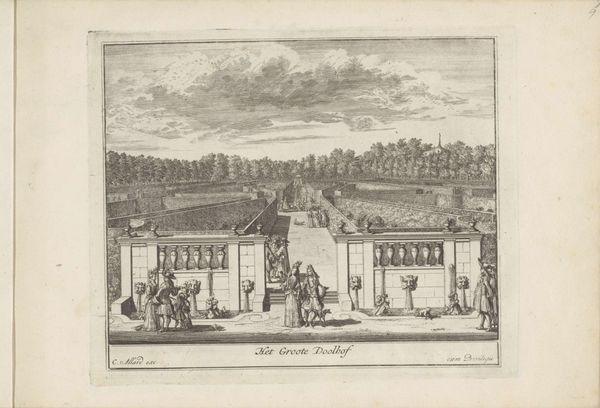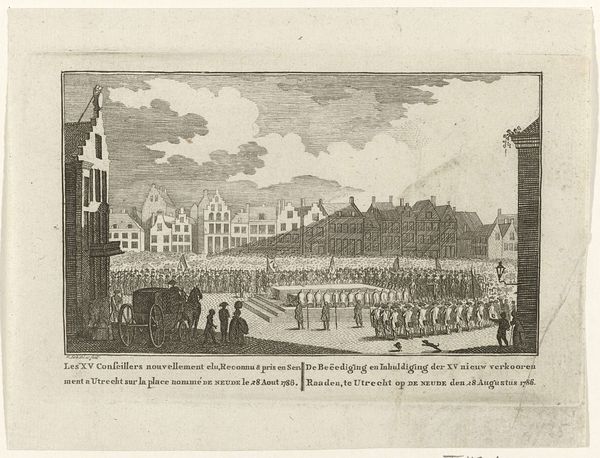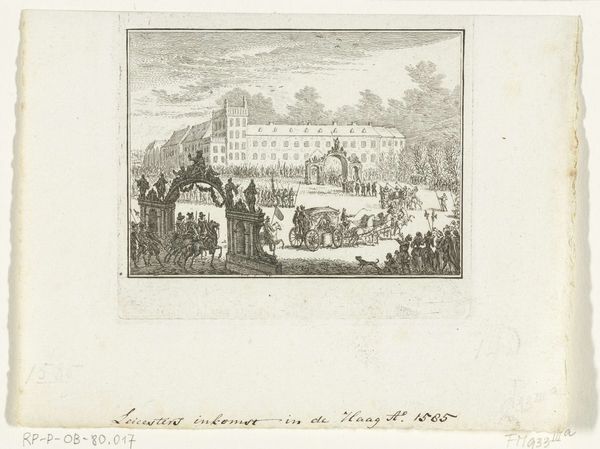
Gezicht op een deel van de tuinen van het paleis van Fontainebleau 1675 - 1711
0:00
0:00
print, engraving, architecture
#
baroque
# print
#
old engraving style
#
landscape
#
cityscape
#
engraving
#
architecture
Dimensions: height 170 mm, width 209 mm
Copyright: Rijks Museum: Open Domain
Editor: Here we have an engraving, "Gezicht op een deel van de tuinen van het paleis van Fontainebleau," dating from 1675 to 1711. It depicts a view of the Palace of Fontainebleau's gardens. It's striking how the artist has captured the grandeur of the palace and the meticulously planned landscape. What’s your perspective on this piece? Curator: This engraving offers a fascinating glimpse into the intersection of power, landscape, and representation during the Baroque period. The palace, of course, functions as a powerful symbol of royal authority, meticulously placed within a controlled, idealized landscape. This isn’t simply a view of a garden; it’s a carefully constructed image intended to project a specific message. What message do you think that might be? Editor: Control, definitely. The perfect symmetry, the manicured gardens – it all speaks to dominance over nature, reflecting the king’s dominion. But also, maybe wealth and sophistication? Curator: Exactly. And consider the role of prints like this. They circulated widely, disseminating these images of royal power to a broader audience, both within France and internationally. This image helped establish and reinforce the image of the French monarchy and its cultural influence. What do you notice about the people included? Editor: They seem small and almost…generic? Like they're there to give a sense of scale more than as individuals. Curator: Precisely. They populate the scene, reinforcing the scale and majesty of the architecture, emphasizing the power that the palace represents. Their presence helps make the palace look all the more grand. This reminds me of a time when images were consciously employed as tools to uphold a status quo. Editor: That’s fascinating. I hadn't really considered how an image could actively participate in political messaging in that way. Curator: And understanding that allows us to critically examine the power dynamics at play within artistic representations, even today. Editor: This has definitely changed how I look at landscape art! Thanks!
Comments
No comments
Be the first to comment and join the conversation on the ultimate creative platform.

